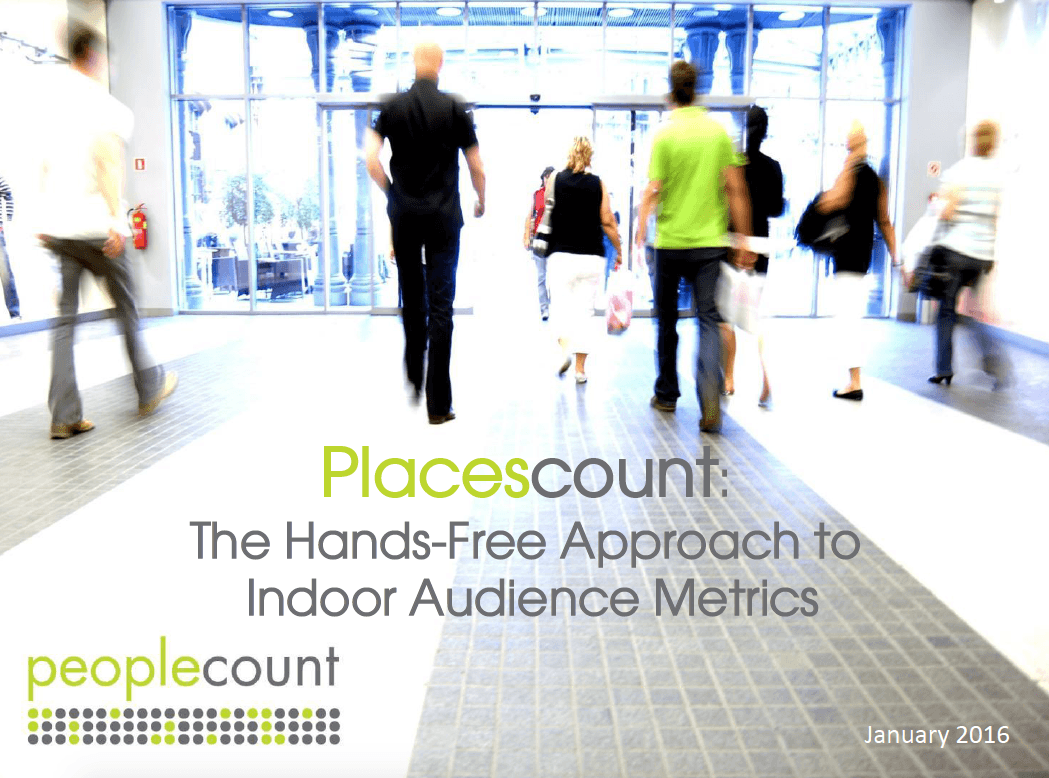
Research Firm Peoplecount Launches Audience Analytics Platform Built Around Smartphones Looking For WiFi
January 27, 2016 by Dave Haynes
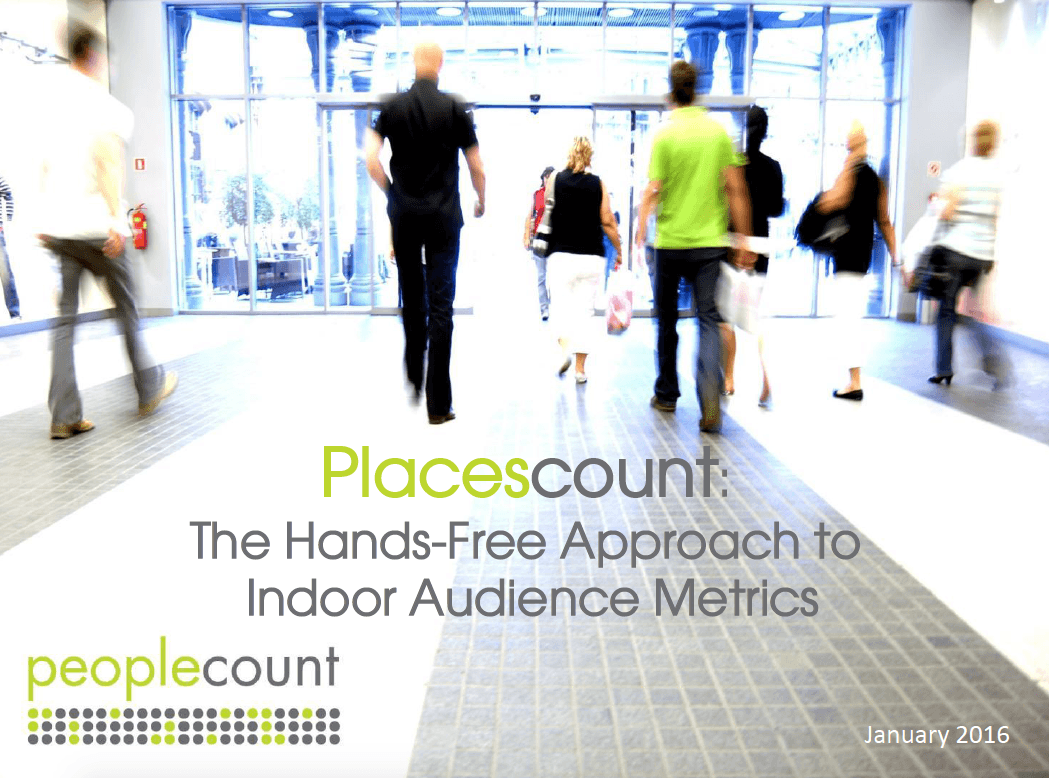
Toronto research firm Peoplecount, which has focused for many years on out of home and place-based media, has developed its own WiFi-driven location analytics platform, called Placescount.
The system passively detects WiFi-enabled smartphones, delivering real-time metrics on dwell time, return trips and footpath analytics. The turnkey service is geared to out-of-home and place-based media operators, as well as other digital signage network operators.
Right now, the targets are measured media audiences in airports, malls, transit stations, stadiums, casinos, convention centers and other large venues. But Peoplecount sees an opportunity to use the same technologies for outdoor media.
By geo-fencing the data, it is possible to track people inside and outside a store or in different parts of a venue, which can range in size from a small store to an international convention center or airport terminal. “This is an economical, accessible and secure approach to location-based analytics,” notes Kelly McGillivray, Peoplecount’s President and Chief Methodologist. “This technology works almost anywhere in the developed world.”
Peoplecount, says a press release, recently compared mobile data analytics, including cell data, WiFi and beacons, all as tools for place-based media measurement. The company went with WiFi for a two-month pilot test, installing a network of WiFi routers in a suburban shopping mall.
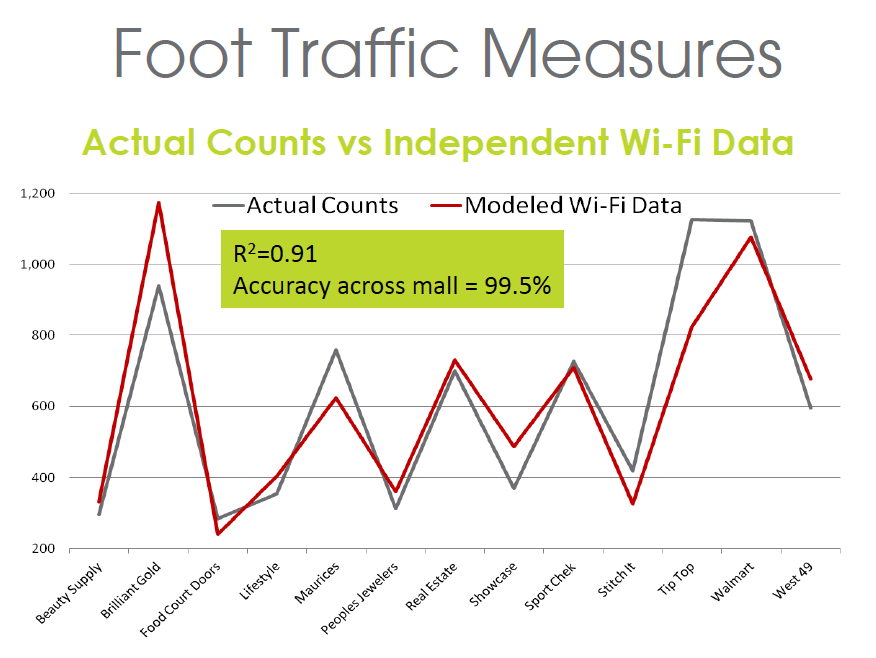
Peoplecount’s platform tracked WiFi pings every five seconds for two months, with the data compared against foot traffic data generated by manual counts and door counting equipment. “We were excited to learn that for individual points the accuracy was 91 percent and across the venue as a whole, 99.5 percent,” says McGillivray.
In other words, the automated data was as good as the methods more traditionally used.
Peoplecount has a detailed presentation of its findings here …
I’ve known Kelly for many, many years, so I asked and she kindly and quickly answered a stack of questions.
I was curious. among other things, if this was Peoplecount’s in-house tech, or based on platforms already written and in the field. The Toronto-area alone has a couple of firms that track smartphones to generate analytics, and there’s another in Kitchener-Waterloo.
Q – is this proprietary tech or have you partnered with and white-labeled a solution from a provider?
A – We are using WiFi analytics providers. So far, we have reviewed about a half dozen providers. Two were eliminated without testing because they just weren’t ready to go to market or had very poor customer service and response times. Two were actually field tested, and we threw out one of those as the customer service was poor, there were many technical flaws and they were not flexible in allowing us access to all the raw data.
The provider we did use was excellent.
As we’re still considering a couple of others, and negotiating partnerships, we are not naming them just yet, but will announce if and when we sign partnership or reseller agreements. Basically, Peoplecount has added our industry-leading research and measurement techniques as the front end to a technology provider’s back-end support system.
Q – Is the advantage to this based around accuracy, turnaround time, cost, or all of the above?
A – The advantages are all of the above and more: accuracy, ease of implementation, short turnaround time and costs. Specifically:
Increased accuracy – A large percentage of the venue’s population is being sampled 24/7. As compared to beacons, there is no need for a specific app or Bluetooth connection, so a much higher percentage of the population is captured. As compared to other static counters, there are other variables being measured like dwell time, return visits and path within the venue.
Ease of implementation – The installation of routers is relatively easy as compared to video-counting or other measurement equipment. The data collection is passive, so does not disrupt the people being measured. It is quite feasible to install on a temporary basis (say, for a month or even just an event) as opposed to many other technologies that must be permanently installed and mounted. The biggest requirement is AC power; there are no concerns with ambient lighting, etc. Also, it is possible to go back over historic data and measure other locations within the venue for new points of interest (e.g., a new DOOH screen installation). In fact, media providers could easily use the data to strategically plan its media locations.
Turnaround time – This can be set up within a couple of weeks. The data are accessed almost immediately through a dashboard in real time.
Costs – Relatively modest as compared to cell phone data providers, static counting equipment or manual counting. Comparisons with beacon costs depend on the area covered and the purpose of the beacons. In addition, this works with $75 routers as opposed to the $500-a-piece equipment that some of the data suppliers are requiring.
Q – I assume one compelling aspect is that this gives the venue a rolling view of what’s going on, versus a hand-counted snapshot in time
A – That’s right. It is possible over time to examine seasonality, day parts, the effects of weather, special events or promotions, etc. It could be overwhelming for an end-user to negotiate all of the data that are actually available, which is why Peoplecount’s role in managing, summarizing and reporting on the data is critical.
Conceivably, the resulting data metrics are perfect as input to an ROI-measurement system and for programmatic sales (i.e., offering real-time audience delivery).
Q – Are the analytics real-time and actionable, or compiled on a scheduled set of intervals? In other words, could real-time data shape content and actions?
A – The data are truly real time and actionable in 5-second intervals. While we don’t have an interface with content management software, it is certainly possible.
Q – How do you buy this service – one time or as a service, based on a monthly or annual fee?
A – Because Peoplecount takes care of the data provider subscription costs, users can subscribe on a temporary basis or decide to keep the installations permanently – it is flexible and customizable. There is an upfront cost and ongoing monthly costs, depending on the venue or network size and the number of Wi-Fi routers deployed. We are working on a rate card and are still learning how media networks and venues would want to use the service. For example, it is feasible to install routers for a month then move them to other venues in the network. Users will not have to commit to a long-term installation, but can decide later to keep it in place permanently.
Q – There are other firms doing this. Does the offer to end-users seem more viable and credible as generated by a proper research firm?
A – Essentially, Peoplecount is using the WiFi data as a measurement tool, but has added significant value to the raw data provided by the suppliers. We offer a turn-key solution comprising installation, software, hardware, data analysis and reporting. Many of these providers will simply ship you the hardware and you are on your own after that.
Secondly, if you take a look at Slides 17 and 18 (in the presentation) as a comparison, these show the “raw” data that the supplier provides, as compared to the cleaned data once we’ve filtered it. For those not savvy in big data management, it would be overwhelming and useless info.
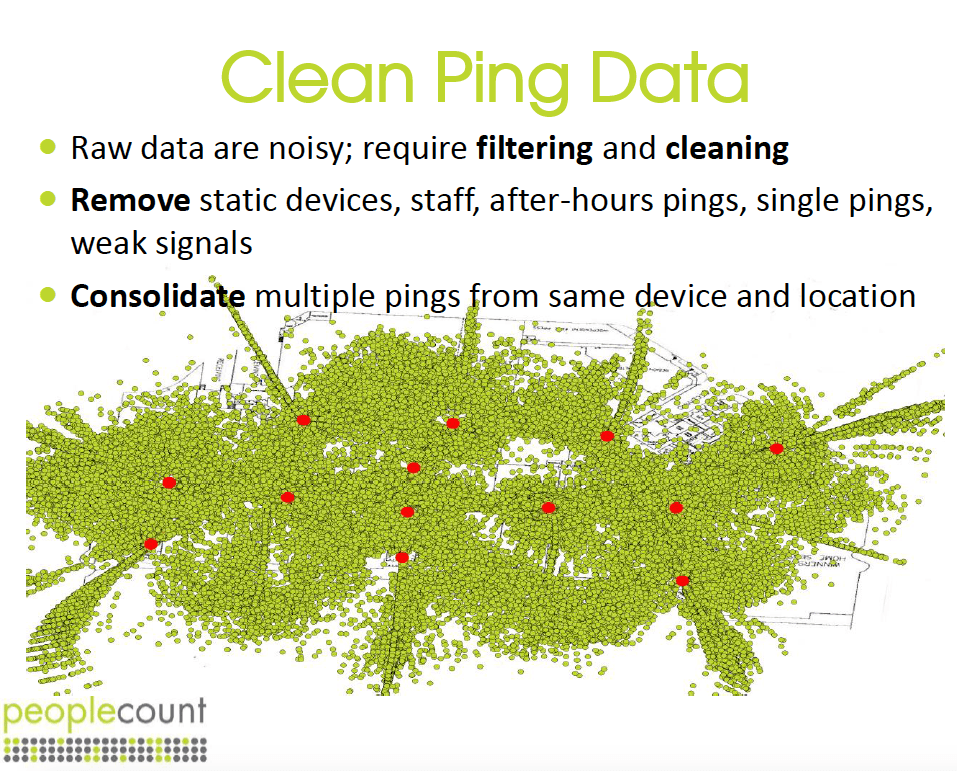
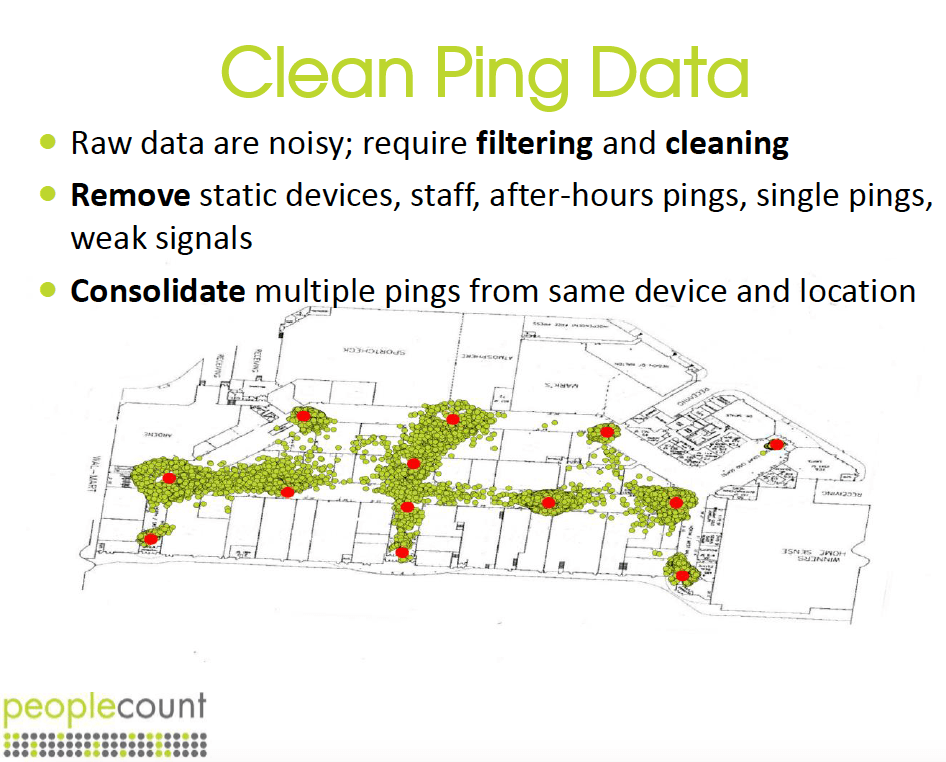
We also added our modeling expertise to expand the sample and project a reach-frequency analysis over time and space. In fact, using the WiFi data we discovered that one of the mall’s door counters was faulty and informed mall management.
Finally, the background work that Peoplecount has already done in testing and eliminating some technology providers, and comparing the data with real counts, adds credibility to the technology and ensures that the modeled data are realistic and very accurate. We simply don’t use any technology without thoroughly testing and calibrating it.
__________________________
I really like the discipline here of coming at this from a researcher-driven perspective, and validating that the tech really does work and compares favorably against other methodologies. I also like the cost-model and pervasiveness of this sort of thing, versus other tech.
Beacons are great, but …
Video analytics are interesting, but …
The only real knock against sniffing cellphones that are looking for WiFi is the perception of privacy being invaded, but it’s all anonymized and based on rolled-up data.



Leave a comment